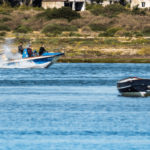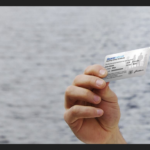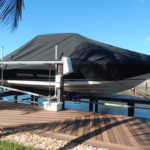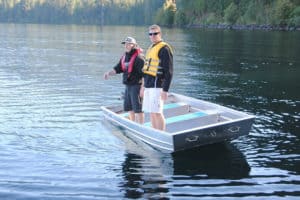Just because you can drive a car does not necessarily mean that you are also ready to drive a boat. Many people think that since you are also dealing with a steering wheel, the driving methods are the same. So, how to drive a boat?
One of the biggest differences between driving a boat and a car is that a boat is always moving around. The current, the wind, and the momentum will always make the boat move. Even if you are operating your boat straight in the water, you will still veer off course. It will not lock on a straight line. You will always need to compensate.
Continue reading to learn more about how to ride a boat safely.
How to Drive a Boat
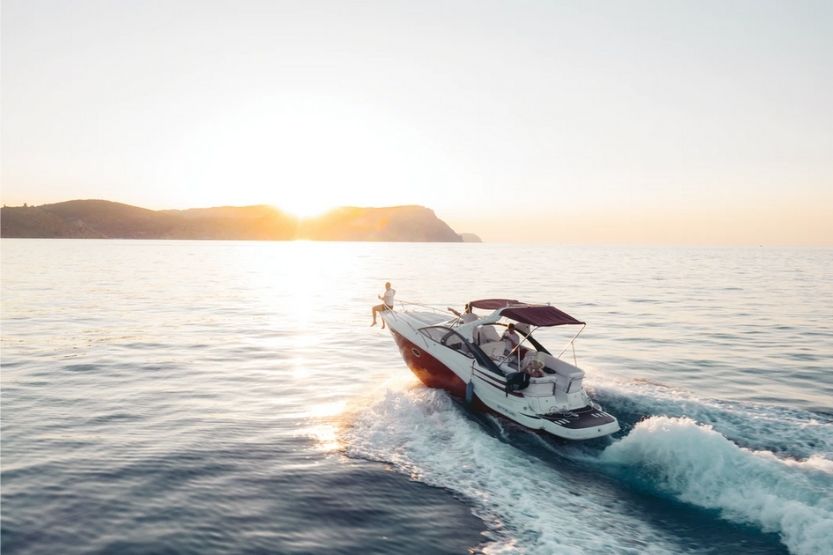
Before getting into the details, let us start with the basics to avoid feeling overwhelmed too soon. Although driving a boat is different from when you are doing it in a car, it is not as complicated as most people think. However, you need to keep your wits about you to prevent untoward incidents.
Boat Driving Basics
- If you have a gasoline-powered boat and it has an engine compartment, turn on the blower (exhaust fan) first before starting the engine. It will ensure that there are no excess fumes inside the engine compartment.
- Put the key into the ignition and turn it to start the engine. Most modern boats have an engine stop/start button. If that is the case with your boat, then push the button to ignite the engine.
- Clip the lanyard of the emergency safety cutoff switch onto your belt loop or life vest. This emergency switch will automatically turn off the engine if you must leave the helm for whatever reason.
- Before disembarking, make sure that all your gears are onboard and your passengers are prepared.
- Remove the lines securing the boat to the shore. Stow them away properly so there are no tripping hazards on deck.
- Push the throttle forward (or reverse if you need to back out) gently until you feel the engine slide into gear.
- Once the boat starts moving, spin the wheel towards the direction that you want to travel. It would be much like what you would do with a car.
- Push the throttle forward until the boat reaches your desired cruising speed.
- Trim the boat (adjust the running angle of the engines) depending on the water condition.
- To slow down, gradually pull on the throttle towards the neutral position. To stop, gradually ease on the throttle to neutral. After that, put the engines on the reverse until the forward motion of the boat stops.
Now that you feel what you need to do, let’s discuss each operation more in-depth.
1. Operating the Throttle
Visualize the boat’s throttle lever as if it is the gas pedal in your car. However, unlike the gas pedal, it stays there instead of springing back when you set the throttle to a specific speed. It means that slowing down the boat requires more than just letting go of the throttle. You have to pull it back gradually.
Keep that in mind because a boat does not have brakes. You cannot immediately stop a boat in case of emergencies. It is important to prepare yourself to adjust the throttle according to the current situation.
Situational awareness is important when driving a boat, just like when you are driving a car. In boating terms, it is called “maintaining a proper lookout.” It means that the boat captain always needs to be watching the surroundings and recognize any risks nearby to respond accordingly.
2. Steering the Boat
As mentioned earlier, operating the steering wheel of a boat is similar to that of a car. You turn the wheel to point the boat in the direction you want to travel. However, unlike a car, many factors will affect the boat’s direction of travel. Among these factors are the water current, waves, and the wind.
It can be frustrating if you are docking your boat, which most newbie boaters find challenging. Before even trying to dock your boat on your own, study the process and practice a bit in a secluded part of the marina away from other boats.
After mastering the art of steering and docking your boat, you may feel ready to take your boat out to the open water. However, to get to your destination and back safely, you need to learn how to navigate first, which we will be discussing later.
3. Slowing Your Boat Down
As discussed earlier, since boats do not have brakes, it is important to ease on the throttle to slow down your boat. However, there is still a bit more you need to know.
First, you must be familiar with your boat, including its minimum stopping distance. It refers to the distance that your boat needs to slow down enough to come to a complete stop when you are running at different speeds. Abrupt speed changes may throw the passengers off balance. You may even throw them overboard.
Keep in mind that boats do not come with seatbelts, and they move around more than road vehicles. You must always be conscious of how you control the throttle and make turns. If you need to make quick maneuvers, make it a point to shout a warning to your passengers to hold on to something before you do so.
With that said, here is what you need to slow down your boat in a hurry. Pull back the throttle to the neutral position. Wait a couple of seconds and then shift to reverse. It is important to wait a while before shifting to reverse as doing so may cause serious mechanical damage.
Remember that these instructions are just the basics of driving a boat. There are many other things that you need to consider to ensure your passengers’ safety. It is the reason why most states require new boaters to take a basic course on boating safety before receiving their license.
How to Trim Your Boat
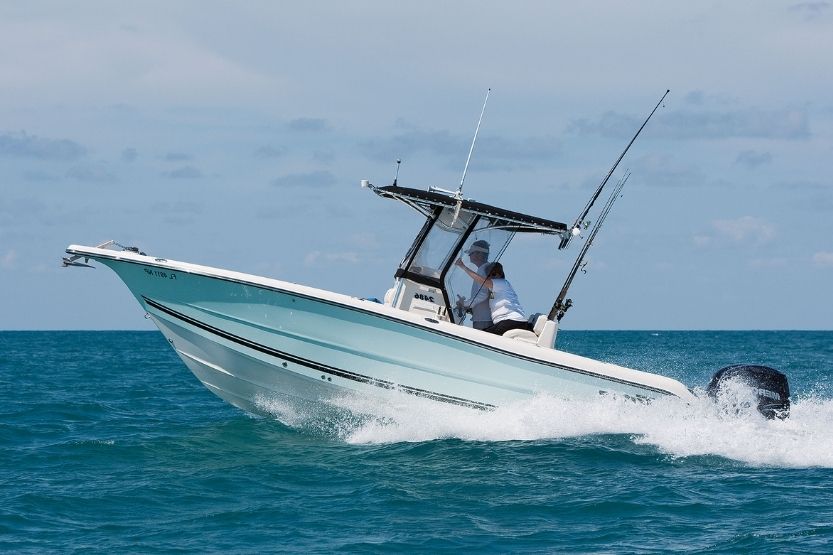
Aside from knowing how to make your boat move forward and back, you need to work on another skill to trim it. Trimming just means changing the angle of the propeller so that you can raise or lower the bow. It affects how efficiently your boat runs and reduces “porpoising,” which is when your boat seems to bounce on the water.
There is no perfect trim setting for all boats. You must figure it out using trial and error. The best way to do this is while you are cruising on the water. Adjust your trim up or down using half-second bursts until you find a setting that you are comfortable with.
Moreover, you need to set the trim at the lowest setting when you are launching your boat. Have the boat level and running at a low speed to make it more maneuverable. That way, you can navigate your way out to the open water safely.
How to Launch Your Boat
After getting your boat license and going through enough practice on the water, you should then learn how to launch your boat from its trailer. If it is your first time doing this, know that it can be a nerve-wracking and exhilarating experience.
Here are the basic steps on how to launch a boat:
- Before backing the boat into the water, check if the drain plug is properly installed and the key is already in the ignition. It is also a good time to turn the switch to the “start” position to check if the batteries still have a charge. Don’t start the engine though as doing so will only damage the water pump.
- Load all of the gear you will be needing onto the boat. Double-check if they are complete.
- Attach the fenders on the boat’s dockside and take down the transom straps.
- Tie the dock lines onto the cleats on the bow and stern.
- Unplug the trailer lights and let them cool down for a bit. It will prevent the cold water from damaging the hot tail lights.
- Back the trailer down the launch ramp as slow as possible. It will give you enough time to correct the trailer in case it gets crooked.
- Continue backing the trailer until you see the stern start to float on the water.
- Put your tow vehicle in park and engage the parking brake. Carefully release the safety chain and the trailer winch. If needed, use a bowline to nudge the boat and get it to slide down the trailer and into the water.
How to Anchor Your Boat?
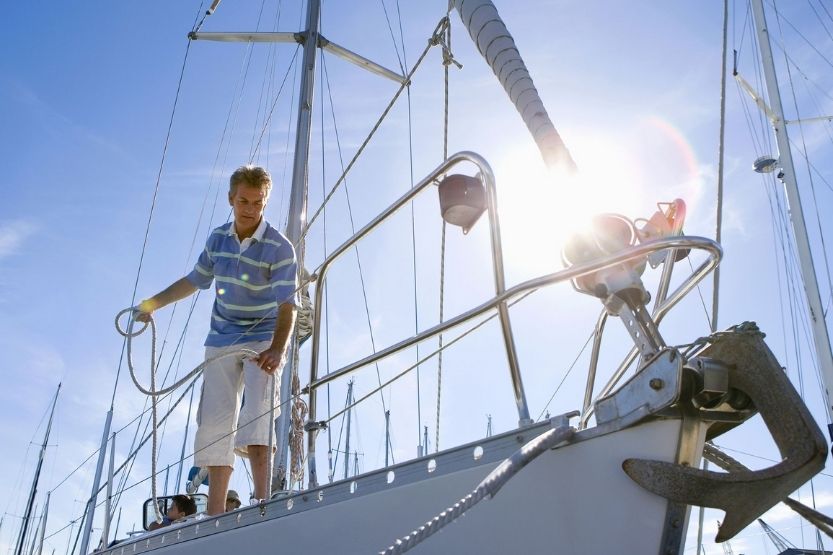
It might seem simple, but learning how to anchor your boat properly is an important part of seamanship. Anchoring your boat will allow you to keep your boat in a stationary spot whenever you want to go swimming in a secluded cove.
It will also come in handy during emergencies. For instance, if your engine fails, the anchor will prevent your boat from drifting away so that rescue boats can find you easier.
Here are the steps on how to anchor your boat properly:
- Determine the water depth where you want to drop anchor.
- If you can, figure out the depth of the water where you want to drop the anchor. You can use your boat’s depth finder if you have one. It will allow you to calculate how much anchor scope you will need. The anchor scope actually refers to the ratio of anchor rode you need to release in accordance with the depth of the water.
- If there is enough room, use a scope ratio of 7 feet of scope for every foot of water. For instance, if you figured out that the depth is around 10 feet, move your boat against the wind or current to around 70 feet from where you want your boat to settle when anchored. After that, drop the anchor.
- Put your boat in neutral and let the current or wind carry your boat back 70 feet. If there is no wind or the current is not strong enough, reverse the boat into position.
- After letting out enough scope, secure the rode (the line attached to the anchor) to a bow cleat. Never secure your anchor rode to the stern as it might get caught in the propeller.
- Reverse the boat a bit more to set the anchor on the bottom.
- Make sure that there is no drag. You can either use nearby landmarks if there are any, or the onboard navigation to find if the boat is moving too much.
- To retrieve the anchor, slowly move towards the anchor while retrieving the anchor rode. Once you are directly above the anchor, it should pull free easily. If it is stuck, slowly turn the boat in a circle and it should get it free.
Now that you now have the basics of driving a boat down pat, practice as much as possible until you master all the aspects. It is also highly recommended to take professional boating courses to learn everything that you need to learn.
Conclusion – How to Drive a Boat
The biggest difference between a boat and a car is that the former is always in motion. The water currents, wind, and the boat’s momentum will always cause the boat to move. With that, it is always necessary to compensate, even if your charted course is just a straight line.
Now that you learned the basics of driving a boat, you can now start practicing your skills on the water. However, it is still highly recommended, and in most cases, required to get professional boating instructions before hitting the water.
Related reading:
How to Drive a Boat? [10 Fundamentals]
How Hard Is It to Learn to Sail a Boat?

